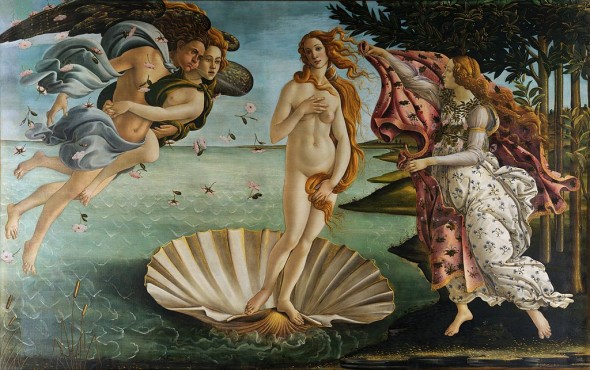After purchasing some ground beef from a reputable grocer, in which I discovered bits of bone and God knows what else, I pledged to grind my own meat from now on! So, last weekend I purchased the food grinder attachment for my Kitchen Aid mixer,
various cuts of beef per Thomas Keller's Ad Hoc at Home cookbook where he gives a detailed tutorial on meat grinding, and made his version of a hamburger.
Well, the meat grinder worked very well, but apparently I didn't get the perfect ratio of meat to fat (should be about 80/20% for a juicy burger), because my burgers turned out to be hockey pucks! ****! I'll keep working on it and fill you in when I figure it out perfectly.
After my burger fail, I still had about 1 pound of my freshly ground lean beef blend (sirloin, spare ribs, and chuck), so I decided to make "Ragu alla Bolognese." Bolognese is a rich thick meat sauce originating in or around the city of Bologna in northern Italy. Ingredients for this traditional sauce include ground beef, pork, and sometimes chicken livers, slowly simmered with the classic soffrito of carrots, onions, and celery. White or red wine is used to deglaze, then beef broth is added and some milk. The sauce sometimes contains tomatoes, which is hotly debated! When making a Bolognese, it is best to use a lean grind of meat and to let the sauce simmer and simmer and simmer for hours. In addition, it is always served with the regions specialty pasta of an egg-rich tagliatelle or lasagna, never durum-rich spaghetti which is from the south! Apparently it doesn't matter which Nona you ask, everyone says their version is traditional and the best! In fact, in the "Classic Pasta" Issue #110 of Saveur, they included six different recipes for this luscious meat sauce! Either way, set aside a lazy day and enjoy this hearty and lovingly made pasta dish with your friends and family! They'll love it and you'll never buy jarred or frozen again! In fact, make extra and freeze it yourself!

Ragu alla Bolognese
Serves 4 (as main course) or 6-8 (as first course)
Ingredients:
For the sauce
2 oz thick-cut pancetta, 1/4" dice (or 2 oz thin slices, diced)
2 small carrots, 1/4" dice
1 celery stalk, 1/4" dice
1 yellow onion, 1/4" dice
2 garlic cloves, minced
2 tablespoons unsalted butter
1/2 lb (250 g) ground (minced) beef
1/2 lb (250 g) ground (minced) pork (or use all beef, if preferred)
1/2 cup (4 fl oz/125 ml) red wine (I like Chianti in this recipe) (Serve the remainder with the pasta!)
1, 28 oz can whole peeled tomatoes, drained, seeded, and chopped
(I prefer San Marzano, if available)
1-2 tablespoons tomato paste
2 cups low-sodium beef broth, plus extra, if needed (I like Better Than Bouillon Beef Base)
1 cup (8 fl oz/500 ml) whole milk
1 teaspoon Kosher salt
1/4 teaspoon freshly ground black pepper
1/4 teaspoon freshly grated nutmeg
2 fresh bay leaves
For serving
1 lb (500 g) fresh egg pasta (tagliatelle, fettuccine, or pappardelle)
1 cup reserved pasta water, if needed
Parmigiano-Reggiano cheese, freshly grated, for serving
Directions:
For the sauce
In a large, wide, heavy-bottomed nonreactive pan, melt the butter over medium-low heat. When melted and foam begins to subside, add the carrots, celery, onion, garlic, and pancetta and cook, stirring occasionally until all the ingredients are very tender, about 30 minutes. They should be a rich golden brown and smell like caramel. (If they begin to brown too much, reduce the heat and add a spoonful of water to slow the cooking.)
Add the ground meat(s) to the pan and stir well. Raise the heat to medium and cook, stirring often to break up the meat lumps, until the meats are lightly browned, crumbly, and their juices have evaporated, about 10 minutes. (Don't let the meat get crisp or dark brown, or they won't absorb the other flavors in the sauce, affecting the desired creaminess of the finished dish.)
Deglaze with the wine, scraping any browned bits off the bottom of the pan. Cook until the wine evaporated, about 2 minutes. Stir in the tomatoes, breaking up with a wooden spoon, 1 tablespoon of the tomato paste, the broth, the milk, salt, pepper, nutmeg, and bay leaves. Heat until small bubbles begin to form on the surface, then reduce heat to very low and simmer, stirring occasionally, for about 1 hour. (If the sauce becomes too dry, adjust with extra stock.)
Taste after the first hour of cooking and add the additional tomato paste, if desired. Partially cover the pan and continue simmering, stirring occasionally, smashing the meat and vegetables with the back of a wooden spoon (helps make sauce creamier), adding more stock if it becomes too dry, for about 1-2 more hours. When ready, remove the bay leaves, taste and adjust the seasonings (salt, pepper, nutmeg), if needed. Skim off any grease on the surface. Cover and set aside.
Finishing the dish
Cook the pasta according to package directions. Reserve 1 cup pasta water. Add drained pasta to the sauce and toss well to coat, adding some of the pasta water if needed. Every strand should be evenly coated. Serve immediately, passing the cheese at the table, if desired.


.JPG)
.JPG)
.JPG)

.JPG)

.JPG)
.JPG)











.JPG)













.JPG)
.JPG)
.JPG)
.JPG)
.JPG)
.JPG)
.JPG)